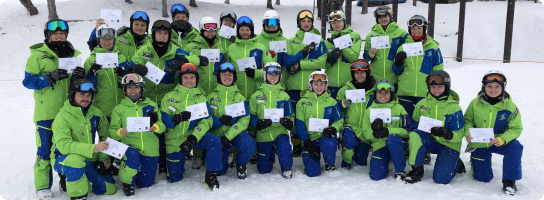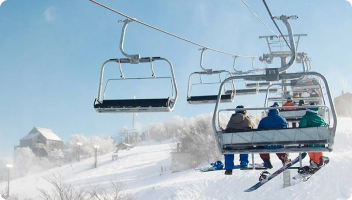Best backcountry skiing and snowboarding/splitboarding in New Zealand
Backcountry scene and vibe
Kiwis love their backcountry. It’s a popular sport in New Zealand, with a number of ski areas providing great access to backcountry. You can find among the most technical tours in the world in New Zealand, from couloirs to open bowls, to trips requiring serious mountaineering skills such as the use of ice axes and crampons.
You will need good decision-making skills, judgement, fitness and technical ability out in the Kiwi backcountry. Fortunately for the Kiwis, they are as hardy as they come, so backcountry trips are increasingly popular among the locals.
NZ has a lot of ‘club-fields’ which are tiny ski areas with often no more than just a rope tow. These areas, particularly around the Canterbury region on the South Island, offer some excellent touring options for day or multi-day trips.
When to go
The season starts in the resorts on Queen’s birthday in mid-June and generally closes in September, depending on the snow.
The snowpack generally settles enough to go out into the backcountry from around early July, and can go through to November.
Weather, conditions, and snow
New Zealand conditions can be quite challenging, as most of the mountains are alpine and above the tree-line. As a result, you need to be skilled up before considering trips out into the NZ backcountry. Trips out in NZ are often remote, and rescue can be seriously far away.
The snow in NZ can also be challenging. It’s important to be able to ski in all conditions to go out into the NZ backcountry.
You don’t see the same huge dumps of powder as in Japan, or Canada, but the prevailing winds can mean big build ups of snow in the gullies, as well as corn and sastrugi. There are still great stashes to be found, of course.
Wind is a particularly tricky aspect of NZ backountry skiing. There can be strong gusts that seemingly never abate, and white-outs are not uncommon given you are mostly always above the tree-line. Your gear should be able to withstand strong wind conditions.
Access to backcountry
Within the resort or lift-accessible terrain
Open runs will be avalanche cleared. This will include on-piste trails, and could also include off-piste areas.
Closed runs may still be inside the boundaries of the resort, but are closed due to ongoing work on the trails, or because of some other danger such as exposed rocks or an avalanche risk.
Outside lift accessible terrain
Full avalanche gear is required, and you will want to be proficient in your backcountry skills.
Best backcountry skiing in New Zealand
In NZ, the West Coast area on the South Island is mostly National Park which means you can fully access the mountains around here. In the eastern parts of the country, there is more limited access given that a lot of the land is private farm land.
The best touring is on the South Island, though around the Ruapehu area on the North Island also offers some great touring spots.
Queenstown
NZ’s best known winter play area, Queenstown, is a haven for backcountry touring. Out the back of The Remarkables ski resort, there are some really nice options, which you can combine with a trip to Queenstown – NZ’s most vibrant ski town.
The area around the Doolans is a really nice area for side-country, with steeps and bowls filled with wind-blown powder. There are also great touring options to go further afield through the Doolans.
Queenstown is a great base for backcountry as you will be able to find lots of guides, and access to all the right gear.
Fox Peak – Club Field
Fox Peak is located in the Canterbury region, closer to Christchurch. It’s a clubfied, meaning it is member-run, as opposed to being to being commercially run. The ski area is on a wide, steep face with chutes and bowls on either side. This means the terrain accessible from the top of the ‘nutcracker’ rope tow is extensive, with some great options to explore further afield.
A popular trip is the Fox Peak to Roundhill Ski Field traverse – it’s a long day of up to 10-hours, but you can be well rewarded with powder and scenery.
Broken River – Club Field
Broken River is a small club field in the Canterbury region of New Zealand’s South Island, around 90 minutes west of Christchurch (100km). It is run and maintained by a dedicated group of around 400 members from around Canterbury, New Zealand and Australia and is run on a not-for-profit basis.
You’ll find a keen group of dedicated backcountry enthusiasts at Broken River, which makes it a great place to get much more into touring and to hone your skills. The ski area is surrounded by a number of peaks which are great to hike and to find nice chutes and steep terrain. Seasonal staff spend virtually all their time hiking and looking for fresh powder and new, interesting lines down the peaks.
Mt Cheeseman – Club Field
Located just near Broken River, Mt Cheeseman is another Canterbury region favourite for backcountry touring. It’s super small and chilled out – usually no more than a handful of groups on the mountain on any one day.
While the ski area itself is rather modest, it does provide access to some really cool backcountry terrain and tours. The Tairn Chutes are a popular place for locals, usually it takes around half an hour to get there from the resort boundary.
In many ways, Cheeseman is the epitome of NZ backcountry. Remote, quiet, chilled out, and offering awesome scenery and snow for those willing to work for it.
Ruapehu
Ruapehu is a volcano on the North Island. It’s here you’ll find the only glaciers on New Zealand’s North Island.
The scenery is different to the South Island, with the dramatic shape of the volcanoes dominating the skyline.
If you are based in Auckland or Wellington, Ruapehu is a much more easily accessible option for touring than the areas on the South Island.
Huts
Check out https://alpineclub.org.nz/product-category/nzac-huts/ for some of the hut options around New Zealand.
In general, the hut network is not nearly as extensive as in North America or Europe. This is partly a blessing, as it helps to keep the NZ backcountry remote. It does mean, however, that some of the best tours will require you to bring tents and stoves. Some of the huts are located a long way from towns, which may even require helicopter flights in, or otherwise on glaciers requiring mountaineering skills.
NZ Alpine Club members get discounts on the huts around New Zealand. Often, the huts are available on a first-come first-served basis.
Books
https://alpineclub.org.nz/product/backcountry-ski-touring-in-new-zealand/
If you’re looking for further information, this book provides some useful tips on the NZ backcountry.
Heli-skiing
Heli-skiing is getter more and more popular in New Zealand. You can generally bank on around $2000 per hour for a 6 seater. Many of the flights take around 20 minutes. A few companies operating around the South Island area, including Wanaka and Mt Cook are:
https://www.mtcookheliski.co.nz/
Mt Cook is generally considered to be the best heli-ski terrain area on the South Island.
Avalanches
Yes, avalanches are of course a danger in New Zealand as in other parts of the world. See this article of a lucky escape near Treble Cone https://www.sbs.com.au/news/avalanche-hits-new-zealand
Therefore, strong avalanche knowledge and rescue skills are very important in the NZ backcountry.
The snow in New Zealand is slightly wetter than in parts of Europe, the US and Canada, which can allow for greater consolidation of layers. On the other hand, wind loading is a big issue in New Zealand, given the gales that blow consistently through the alpine areas.
Avalanche fatalities are lower in New Zealand. As Wilderness Mag (https://www.wildernessmag.co.nz/the-truth-about-avalanches/) points out “In Canada, there about 10 avalanche fatalities each year. In the US, the average is 19. In France, it’s around 30. In New Zealand the average number of avalanche fatalities hovers around two a year.” But, don’t be complacent out there. Between 2000 and 2009, 245 people were caught in avalanches according to information caught by the Mountain Safety Council.
Avalanche ratings advisory services
https://www.avalanche.net.nz/ is the key website for information on avalanche ratings and advisories. It provides information across the country as well as ratings, and current snowpack conditions.
It is run by the New Zealand Mountain Safety Council.
https://www.mountainsafety.org.nz they have a few extra tips on heading out into the New Zealand backcountry.
InfoEx
The Info-Ex is a cooperative service managed by the MSC. On it, you will find a daily exchange of technical snow, weather and avalanche information between organisations and commercial businesses that actively manage avalanche hazards during the winter months (e.g. heliskiing companies, ski areas and land managers).
You can subscribe to the database. This allows you to view daily weather, snowpack and avalanche observations. The service is used in particular by avalanche professionals.
https://www.mountainsafety.org.nz/activities/alpine/backcountry-snowsports/
Weather
For weather forecasting, go to
https://www.metservice.com/national/home which is a commercial company created out of the national weather service.
http://www.metvuw.com/forecast/ also has weather forecasting around New Zealand, as well as the Pacific region.
Avalanche course providers
A good list can be found here https://www.avalanche.net.nz/education/course-providers/ or here
https://www.mountainsafety.org.nz/resources/community/courses/
Other useful apps
https://www.walkingaccess.govt.nz/ is a government site with information on walking trails in New Zealand
For maps, http://www.topomap.co.nz/ provides topographical maps of New Zealand.
The Avenza app allows you to input coordinates onto your phone. A solar charger is not a bad idea to keep your phone charged.
https://wbskiing.com/inclinometer.php measures the incline of a slope.
The Mammut Safety App is another useful one for slope angle and GPS.
Mountain rescue
https://www.maritimenz.govt.nz/about/what-we-do/safety-and-response/RCCNZ/ The Rescue Coordination Centre New Zealand (RCCNZ) is New Zealand’s national search and rescue organisation. Make sure your Personal Locator Beacon is coded for New Zealand and the RCCNZ. Contact them if you are unsure.
https://www.landsar.org.nz/ is the national volunteer rescue service in New Zealand which may assist in a recovery. Bear in mind that many of the best touring spots are highly remote, so you will need to be self-sufficient.
Insurance
Critical to get good insurance so that any rescue would be covered for cost. Even if the rescue part is free (not necessarily a guarantee), the doctor’s bills won’t be.
Guides
https://www.alpineguides.co.nz/backcountry-skiing is an option around the South Island.
Gear
Beacon, shovel and probe is essential out in the NZ backcountry due to avalanche risk. Due to the particularly strong winds, good wind protection is also highly recommended if going out into the NZ backcountry.
Check out Backcountry Gear for further information on the necessary gear to head out into the backcountry.
Rental gear is also available in major towns, including AT bindings, avi backpacks, transceivers, probes, shovels and other backcountry gear. If going to a smaller club field, best to get this all beforehand.
Happy touring!


